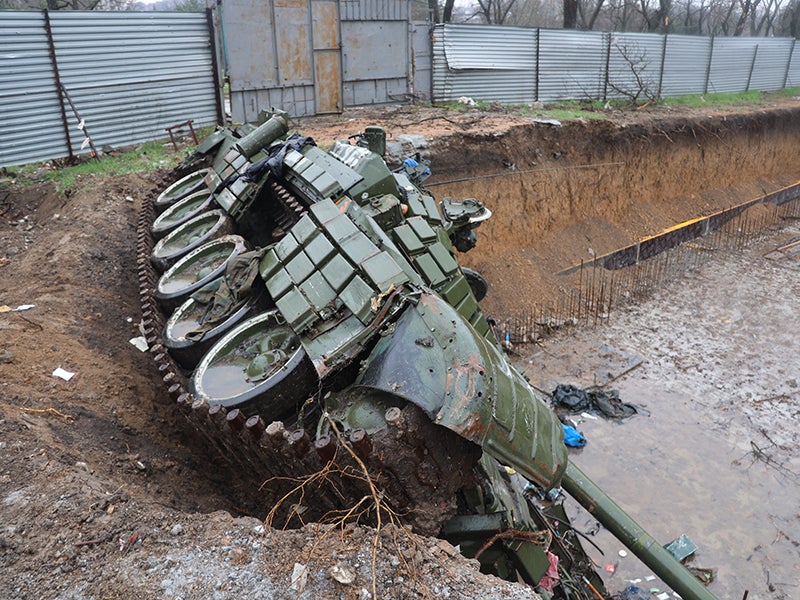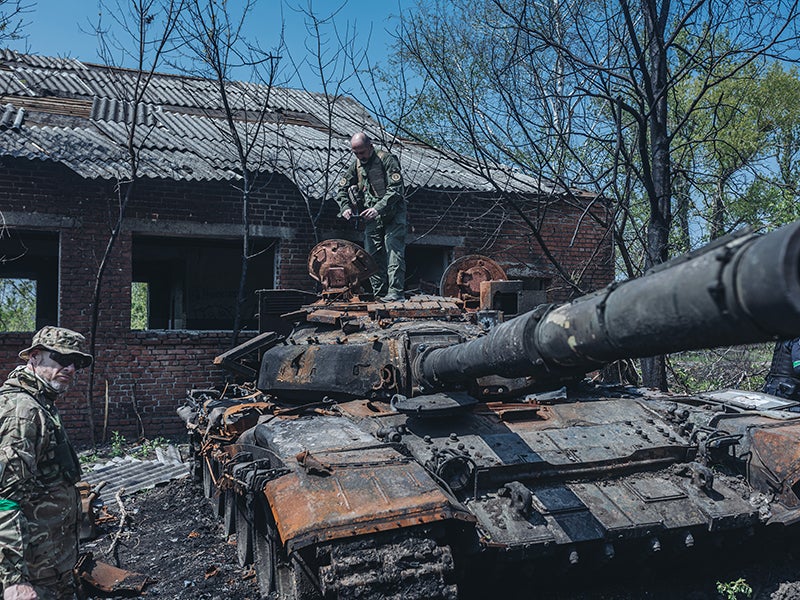
In 2014, a relatively small Russian force, estimated at between 8,500 and 11,000 personnel, fought alongside around 26,000 separatists in the East of Ukraine, to bring a similarly sized Ukrainian force to a standstill. This invasion by Russian troops led to apparent revelations about Russian combat capabilities.
The combination of electronic warfare with uncrewed aerial vehicles (UAV) and artillery fire coordinated in real time had sparked real concern amongst Western militaries. The rocket attack at Zelenopillya on 9 July 2014, which rendered three Ukrainian armoured brigades ineffective, came to be emblematic of Russian capabilities.
How well do you really know your competitors?
Access the most comprehensive Company Profiles on the market, powered by GlobalData. Save hours of research. Gain competitive edge.

Thank you!
Your download email will arrive shortly
Not ready to buy yet? Download a free sample
We are confident about the unique quality of our Company Profiles. However, we want you to make the most beneficial decision for your business, so we offer a free sample that you can download by submitting the below form
By GlobalDataA decade of successful posturing
The Ukraine war appeared to show that the Russian modernisation, which had started in 2010, had borne fruit, an impression that was largely confirmed by Moscow’s ostensibly successful deployment to Syria in 2015.
There, Russian forces reportedly engaged targets using real-time reconnaissance passed from the battlefield back to the National Defence Management Centre in Moscow. Russian forces employed a variety of cruise missiles to strike targets from as far away as the Caspian Sea and even tested the Orion armed UAV for the first time in 2018.
Alongside this, regular reports from the Russian Ministry of Defence (MoD) indicated that the latest weapon systems were entering service at pace. The first T-90M Proryv main battle tank was delivered in April 2020 and deliveries of T-72B3Ms and T-80BVMs were reported frequently, as were the well-publicised deliveries of BMD-4M infantry fighting vehicles for Russia’s airborne forces (VDV).
Most exercises included some form of UAV and artillery coordination and the Russian air force gathered new planes at an impressive rate, whilst its air defence systems grew in number and complexity.
Why Russia’s armed forces struggled in Ukraine
All of this, and the perceived dire state of Ukrainian forces in February 2022, gave analysts cause for concern. It seemed certain that the advanced Russian military would brush Ukrainian forces aside within a matter of days. However, as Operation Z unfolded, it became clear that something was amiss – not only were Russian forces failing to achieve their initial objectives, but they were failing to meet basic military standards.
It is true that Ukrainian resistance has been phenomenal; however, there remains a question over the Russian armed forces and the threat they may or may not pose to Europe and Russia’s other neighbours. As Michael Kofman, director of the Russia Studies Programme at CNA has remarked, the challenge is to convince people that the Russians are not “four feet tall.”
On one hand, the Russian operation in Ukraine has been characterised by poor assumptions and intelligence failings. It is apparent that Russia’s Federal Security Service (FSB) had provided an erroneous assessment of the situation in Ukraine, which led to the belief that regime change would be welcomed and that resistance would be low.
The purging of 150 FSB officers in April stands as a mark of Putin’s dissatisfaction with the service’s performance on Ukraine. It seems reasonable to assume that at least some of the failings are due to the FSB leading the structure of the operation and that weaknesses inherent in the FSB impacted its ability to provide an honest judgement of the situation.

Furthermore, the level of secrecy around the operation meant that some of the units originally fighting in Ukraine were not provided with any warning of what they were about to do, believing instead that they were embarking on an exercise. Similar conditions reportedly occurred in 2014, with Russian troops reporting that they were expecting to be on exercise rather than at war.
Time to prepare for the conflict may have allowed some units to prepare supplies and organise according to Russian doctrine. This may have prevented some of the initial confusion that was apparent within the Russian forces and enabled better coordination between the VDV and ground forces during the battle for Hostomel Airport, for example.
This is one facet of the Russian operation that could be easily corrected, as Dr Jack Watling of the Royal United Services wrote in March 2022. So, whilst this was a contributor to the failings of Russia’s war in Ukraine, it could be easily corrected and shot not impact an assessment of Russia’s military capability.
“Failings in Ukraine do not prove that Russia’s nuclear arsenal is incapable of holding the Western way of life at risk.”
Basic intelligence and preparedness failings aside, there have been other shortcomings in the Russian armed forces that may be harder to address.
One example is the use of unencrypted radios to communicate. Some evidence suggests that this is more endemic than it was previously thought. Russian bloggers are working to raise money so that commercial radios can be procured for Russian troops fighting in Ukraine, and open-source analysts have intercepted and recorded conversations between Russian troops fighting in Ukraine.
The failure to provide encrypted and secured communications is likely a result of many failings, including corruption and systems that have been found too technically challenging for some Russian soldiers. If corruption is the root cause of Russia’s communication woes, it will be a difficult problem to correct as corruption is a part of military life in Russia.
Additional challenges have been observed in Russia’s ability to supply its troops with fuel, food, warm clothing, and spare parts. This may be one of the causes of Russian vehicles being abandoned in perfect working order or the loss of momentum in Russian advances. It has also led to poor conditions for Russian soldiers, with some reporting frostbite or out of date rations.
The causes of these issues are again diverse in nature, but logistics can be adjusted and improved – especially as unseasoned soldiers recover from the initial shock of combat and adjust their procedures.
Building future deterrence against Russia
One final element to consider is the bigger picture of Russia’s military organisation. It has demonstrated the ability to deploy massed cruise and ballistic missiles in strikes against Ukraine’s critical national infrastructure and some evidence suggests these attacks are growing in sophistication with multiple missile types reaching a target simultaneously. Russia’s deterrence ultimately rests on its nuclear triad, which remains the largest inventory of nuclear weapons in the world.
Failings in Ukraine do not prove that Russia’s nuclear arsenal is incapable of holding the Western way of life at risk. Because of this, analysts, government, and industry must carefully consider what lessons the war in Ukraine provides about Russia as a country and as a military.
It is unlikely that Russia will be written off as a threat, but the threat that it presents should be carefully considered against the ability of the Russian military to project force and achieve Moscow’s national goals. This can then inform the way in which Nato chooses to conduct deterrence in the coming years.








